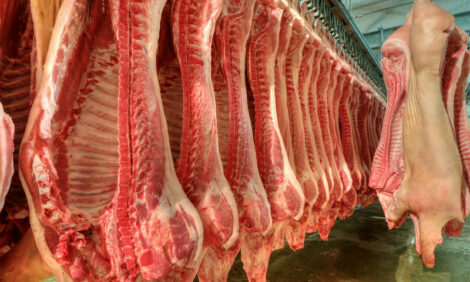



International Meeting Focuses on Controlling PED Spread
US - At the recent Swine Enteric Coronavirus Diseases (SECD) International Meeting, there was a review of the risk factors and the pathways of introduction and spread of PED and a discussion on its impacts and control strategies.The Porcine Epidemic Diarrhea (PED) virus was first recognized in the United Kingdom in 1971 and it soon spread throughout much of Europe and Asia. In May 2013, the first case was confirmed in the United States.
PED is a disease that attacks neonatal piglets, in which morbidity and mortality can be 80 to 100 per cent. The disease has a severe economic impact, especially on smallholder farms where losing litters can destroy farmers’ livelihoods through production loss in swine. The cost of vaccination and biosecurity to prevent the spread of the virus causes farmers further financial losses.
Due to the severity of the disease, the United States Department of Agriculture Animal and Plant Inspection Health Service (USDA/APHIS) organised an international meeting to share information and experiences of PED among veterinarians, epidemiologists, researchers and analysts working in international, governmental, non-governmental and the private sector related to swine health.
The main objectives of the Swine Enteric Coronavirus Diseases (SECD) International Meeting, held in Chicago, Illinois from 23 to 25 September 2014, were to review the risk factors and the pathways of introduction and spread of PED as well as discuss its impacts and the strategies needed to control it.
Around 150 participants came together, with speakers presenting on individual country’s experiences followed by recommendations to prevent the introduction and spread of the virus into pig farms. One of the main strategies for curbing the spread of emerging diseases is to stop the virus from being introduced into non-infected areas.
Three main methods to do so were stressed at the meeting:
- the need for rapid identification of disease foci;
- the need to raise awareness among stakeholders with the participation of the private sector; and
- using recommended biosecurity measures.
Some countries, including Colombia, the Dominican Republic, Mexico and Thailand, also shared their experience of using social media tools such as brochures and radio to raise public awareness on the disease.
While USDA has dedicated US$26 million for the domestic prevention of PED, there is a need to seek support for future international initiatives to better prevent and control the disease in developing countries.
Dr Eran Raizman, head of the Emergency Prevention System for Animal Health (EMPRES-AH) at the Food and Agriculture Organisation of the United Nations (FAO), gave a presentation on “Ensuring Food Security Through Minimising the Impact of Animal Diseases” in which he emphasised the importance of preventing the spread of PED to smallholder pig production in developing countries.
By reuniting representatives of national pork production industries and international experts on swine health, the SECD meeting in Chicago represents an important first step towards creating a collaborative network between the public and the private sectors to combat future incursions of PED in non-infected countries on a global level.
Original source: FAO report








